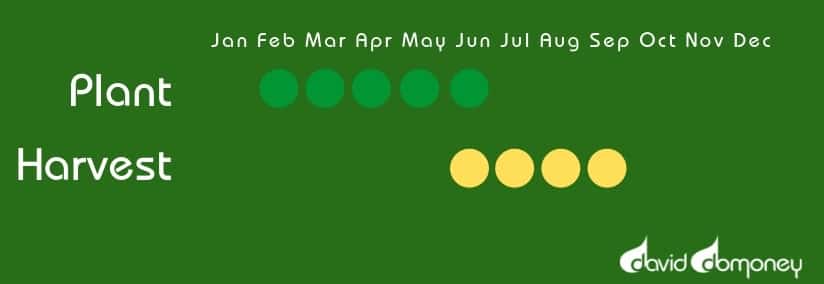Beetroot is mainly used to add colour and flavour to salads. It can seem a slow-starting crop, but it will grow faster once the seedlings emerge so don’t panic! It’s best to pull up the plant before the beetroot grows too large or it may have a woody texture. To ensure a continuous supply and avoid a glut, sow little and often every two to three weeks throughout the summer.
Sowing
Growing your own plants from seed is always exciting. Seeing them develop into new plants is very rewarding, and it’s a cost-effective way to add to your garden.

How to look after me
Soil: Any type, light, high-nitrogen
Position: Sunny and open
Location: Outdoors, container
- Prepare the soil well
- Sow the seeds 1-2cm deep in rows 7cm apart
- Sow in spring when soil has warmed to about 7C
- Beetroot seeds can be slow to germinate so soak them in warm water for four hours before sowing
- Some types of beetroot ‘bolt’ if sown too early or if the weather is very cold. If you’re sowing early in the season, choose a bolt-resistant variety
David’s Top Tip
You can grow enough beetroot to store it over winter. Sow a new crop in late summer, at least 10 weeks before first heavy frost is expected, and lift them out before it strikes

Growing

- Beetroot seeds are actually made up of a cluster of 2 or 3 seeds, so thin out the weakest seedlings as soon as possible
- Thin to 10cm apart if growing main crop beetroot, 2.5cm apart if growing to pickle
- Beetroot are sensitive to changes in water levels – dryness will cause woodiness and low yields; a sudden return to water will cause splitting
- Keep conditions stable by watering moderately every two weeks. You can also apply a mulch to help retain moisture
Did You Know?
The young green leaves of beetroot tops can be used in salads or eaten as green veg
Harvesting
- When the roots reach golf ball size, pull up alternate plants. Use the thinned crop as normal and leave the rest to mature to a larger size
- Beetroot are ready to harvest 7-13 weeks after sowing. Do not leave them to reach cricket ball size or they will be woody
- Twist off the leaves rather than cutting, which causes the vegetables to ‘bleed’. Leave a 5cm crown of stalks above the beetroot
- In mild areas beetroot can be left in the ground over winter if the soil is well drained, but cover them with a layer of straw
- If you’re not leaving them in the ground, lift before severe frost and store in moist sand in a frost-free place
- Harvested beetroot will normally keep until mid-spring
Top Tip
If you twist the leaves off, rather than cutting them, it should help to prevent the highly-coloured sap from leaking out and staining.

Leave A Comment